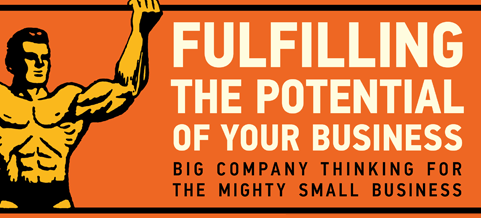The Price Earnings Ratio is widely quoted in the media. It causes controversy in negotiation rooms every week of the year, especially concerning the selling of private companies. It dominates pundits thinking – when to buy equity – when to sell equity. So what is this ratio, where do you find examples and how do you apply it in business. As you look at the ratio think of it as measuring potential. The potential for growth.
Definitions & Examples
- For a public company the most common definition is share price divided by Earnings per share or if you prefer – Total Market Capitalization (how much it is worth) divided by the previous year’s post tax profits. Lets take 3 popular names: Google PE 19.7, Microsoft PE 10.1 and LinkedIn PE of 479.(yes 479) The market is saying that based all the information publicly available, Google is valued at 19 years of historical profit, Microsoft at 10 years of historical profit and LinkedIn at 479 years of historical profit.
- Do private companies trade at a PE ratio? Answer no, not until they sell out and a buyer places a value on them or if they are very special private companies eg Facebook where there is a secondary market within a little club of investors. Generally speaking private companies don’t really have a PE ratio attributed to them but when they sell out, if the terms of the deal are disclosed, then the journalists get to publish the effective PE ratio that the company sold out for. However the definition remains the same: How much the company was sold for (worth) divided by the previous years post tax profits.
- Standard & Poor’s 500 stock index currently trades at an average of 14.5. (An index of 500 stocks chosen for market size, liquidity and industry grouping, among other factors. The S&P 500 is designed to be a leading indicator of U.S. equities and is meant to reflect the risk/return characteristics of the large cap universe. ref Investopedia)
- Historical average between 1872 and 2000 of all US public companies is also 14.5 according to the Fed Reserve Bank of Kansas City.
- Robert Shiller (Yale professor) measures the PE in a slightly different way – he calculates the PE index of the S&P 500 based on the average profits over the last 10 years and he often compares that with the long term average PE mentioned at 4 above.
- Sector average PE ratios of US public companies are documented here at Y Charts data based on on 4739 US public companies from a market worth of $435Bn to as small as $450,000! e.g. Basic Materials 41, Conglomerates 14, Consumer Goods 28, Healthcare 29, Utilities 34, Technology 59.
- UK public company sector averages are found here at the FTSE Actuaries Share Indices table. Remember these are averages and individual companies within these sectors could have wildly different PE ratios to these.
- Private company M&A tables will often disclose the PE ration derived from a deal here at Acquisitions Monthly
- BDO’s index tracks private company deals in the UK and the average PE paid.In 2010 the average for the 1928 deals completed was 11.7.
When do you use it in business?
- Well it is certainly used heavily when assessing the potential worth of a private company. A public company comparative ratio is often found and a benchmark is then established by applying a discount to that public company PE to arrive at a fair PE to apply to the private company’s post tax profits to determine the value of the business. The fun starts when profits are normalized to exclude excessive owner benefits and one offs.
- When minority stakes in private companies are being sold to new shareholders, advisers will often lean on PE ratios to guide the valuation discussions.
- New IPOs will be priced partly on comparatives of existing PE ratios in that sector. Of course how comparable is a new market entrant like LinkedIn to any stock.
- Many public companies are seen to be cheap based on PE ratios eg above I quoted Microsoft at a PE of 10 which is about 31% cheaper than the S&P 500 average of 14.5. Does this mean you should buy Microsoft? Maybe but if you don’t think profits are going to climb much then maybe not. Clearly with a PE of 479, you have to say LinkedIn has a great deal of growth built into the price. The business is valued at $8Bn on profits of about $17m. The market is effectively saying we expect profits to grow to $551m ($8Bn at an average PE of 14.5) which they might.
Well I hope that takes the mystery out of a simple ratio. Now there are many flavors of the ratio but if in doubt always clarify the definition of the nominator and denominator before jumping to conclusions.
More examples and much more in my New Book, buy it here.
I










Great data, Ian. Private owners would be wise to determine their P/E ratio as it will relate to valuation during a business transition process. – Of course I would love to own shares with a of 479 – if I bought them cheap enough:)
Knowledge of PE ratios seems essential for everyone these days. It is important to realize just how highly priced some of these new IPOs are.
Hi Ian,
Thanks so much for sharing your post with the BizSugar community and for giving us a brief overview of the Price Earnings Ratio. For small business owners, I think the value of a company they have built with their own two hands is often a bit subjective. It certainly wouldn’t hurt many small business owners and entrepreneurs, even from a very early stage, to have a look at the value of their business from a more objective viewpoint, perhaps looking at it from the standpoint of how others may see it too.
“The Price Earnings Ratio – Everything You Need To Know